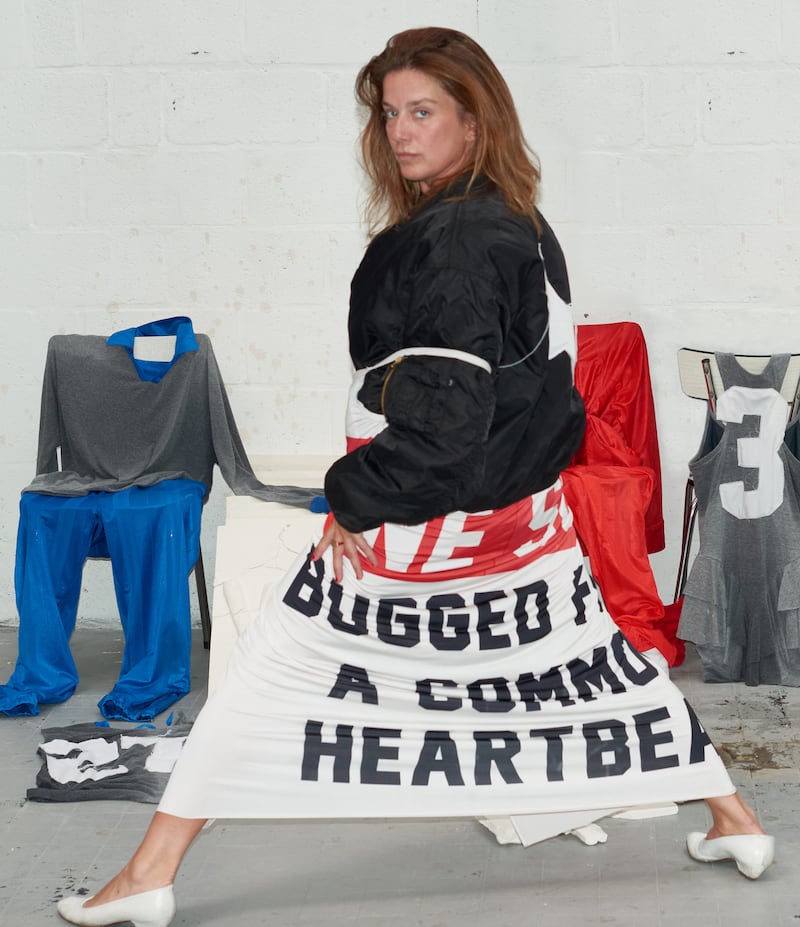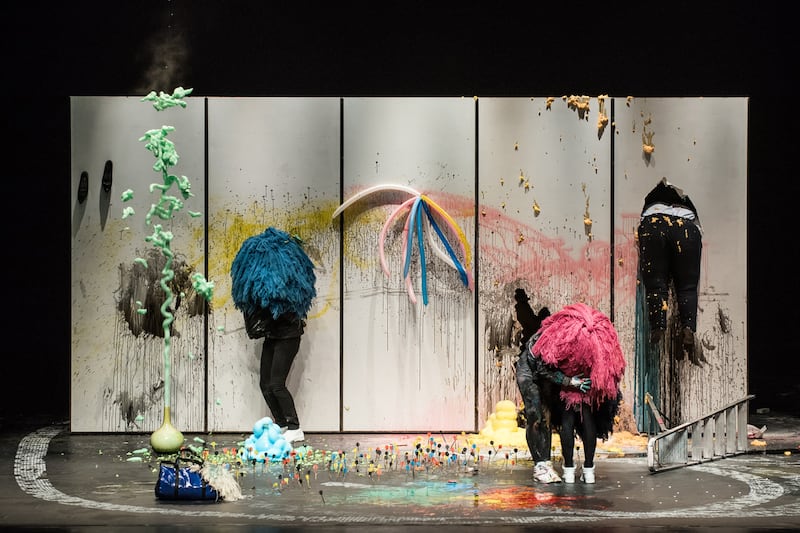Each July the courtyard of the 19th-century Lycée Saint-Joseph is transformed into a 750-seat outdoor venue at the Avignon Festival. I was there last year, as director of Dublin Theatre Festival, to see the opening season of One Song: Histoire(s) du Théâtre IV, by the Belgian artist Miet Warlop, whose work I have been following since the mid-noughties.
Premiering a work is always a high-stakes enterprise. When it’s in this open-air arena at one of the world’s most high-profile and prestigious performing arts gatherings, there’s an extra charge.
Watching the piece on a warm summer night, the air scented with rosemary and lavender, was an intense, thrillingly live experience. Its relentless, increasingly frenetic mash-up of motifs from sports and rock music brought the audience to a state of exhilaration over the course of an hour.
Often the artistic concerns of continental Europe don’t translate to the more drama-centric Anglosphere, but the New York Times found the “loud, preposterous” One Song extremely entertaining; the Guardian reported that it was “the most exalted show of the opening days ... eliciting a massive ovation”.
READ MORE
All of which helps explain why I wanted One Song: Histoire(s) du Théâtre IV to be the closing show of this year’s Dublin Theatre Festival.
I speak to Warlop about the genesis of the project via Zoom from her hotel room in Paris, where One Song is midway through a three-week run. She is tired but upbeat, wryly musing on the wisdom of such a long series, which was booked in the excitement of the hours after the premiere. It’s a great opportunity to talk to someone whose work I have admired for a long time but with whom I usually only have brief chats on the fly after a show.
She reminds me that her first international gig was at Dublin’s Project Arts Centre, where I was working at the time, in 2008. “The first time I went on tour was in Ireland, so it’s good to come back. Look at us now, being old!”
One Song has its roots in Sportband, a piece Warlop made about the death of her brother Jasper; she was understandably nervous about how it would go down.
“Was I worried? Yes. I just knew that, either way, this moment would change my life, you know. If it was bad then I’m gone, or it’s good and I will go on. If it wasn’t good then it would mean that I had made a requiem for my brother into a flop, which would be totally unbearable. But then it happened, and I felt loved and understood by the audience. It’s crazy.”

The invitation to make One Song: Histoire(s) du Théâtre IV came from Milo Rau, the outgoing director of the Flemish city theatre NT Gent and the originator of its Dogme-like 10-point Ghent Manifesto. Point one goes, “It’s not just about portraying the world any more. It’s about changing it. The aim is not to depict the real, but to make the representation itself real.”
Warlop says: “He just asked me, ‘What’s your history as a theatre-maker? What does it mean for you? Please don’t take it too literally and just do whatever you want!’”
In fact, Warlop’s history started with her training as a visual artist, but she soon found her way into theatre in the vibrant, multidisciplinary and open-minded Flemish scene.
“I graduated as a visual artist and found it difficult standing next to a sculpture and saying, ‘I made this.’ So I wanted to put some dynamics into the work, to find the attitude of the sculpture. Images grow pretty fast in my head; the work for me is to find the character or attitude within those images. That’s how I came to make performances.
“Expressing yourself is one thing; we truly do it very much through our tongue – by speaking. But I think if you can rest your eyes on an image that is representing some kind of feeling, emotion or motions in your head or in your body, this can also be a way of trying to get something, to understand it, but also get it physically.
“You can see in my first pieces that I don’t really understand that I’m performing. I’m just walking around, trying to walk as silent as possible, because I’m actually just building an image. Because I came in from visual art, I didn’t understand, but I had to kind of conclude that I was performing. Then I got really shy, started to hide myself in a box, or under a wig, behind hair. I was suddenly this kind of character, which I wasn’t really longing for.”

This shyness was not obvious in the pair of Warlop works that were previously seen at Dublin Theatre Festival, Mystery Magnet, in 2012, and Fruits of Labor, in 2017. The performances featured radio-controlled inflatable floating sharks, a performer breaking through and getting wedged in a wall, bullfighting an enormous styrofoam berg, and water and coloured smoke and foam all over the stage. I still remember, watching Mystery Magnet for the first time, my mix of shock and delight when a volley of darts came flying over the back wall of the set and fell short of the audience, perforating the stage.
Despite its extravagant energy, One Song has at its heart a meditation on personal grief that aims to resonate more widely.
“You try to answer in the unity of everybody who lost somebody, because, when somebody is dying in front of your eyes, you’re not immediately understanding that everybody goes through that in their life. It’s really a horror when it’s happening to you. You are not immediately connecting it to everybody around you and to the kind of thing that we all carry. Even love, I think some people never have it in their life. But loss, I think it’s difficult for you not to experience it, because in the end you lose yourself also.”
One Song: Histoire(s) du Théâtre IV is at the O’Reilly Theatre, as part of Dublin Theatre Festival, from Friday October 13th to Sunday October 15th



















